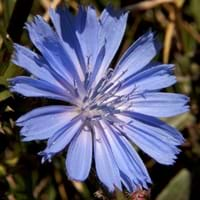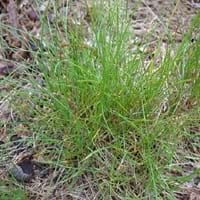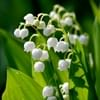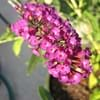Life Span
Perennial
Perennial
Type
Flowering Plants, Shrubs, Vegetable
Grass
Origin
Mediterranean
Southern Europe
Types
Belgian Endive, Red Belgian Endive, Curly Endive (a.k.a. Frisee), Escarole, Radicchio (Chioggia) and Radicchio (Chioggia)
Fine leaved sheep's fescue
Number of Varieties
Not Available
Habitat
Grassland, Mediterranean region, Wild
Mountain Slopes, Pastures
USDA Hardiness Zone
3-9
4-8
Sunset Zone
A1, A2, A3, H1, H2, 1a, 1b, 2a, 2b, 3a, 3b, 4, 5, 6, 7, 8, 9, 10, 11, 12, 13, 14, 15, 16, 17, 18, 19, 20, 21, 22, 23, 24
1a, 1b, 2a, 2b, 3a, 3b, 4, 5, 6, 7, 8, 9, 10, 11, 12, 13, 14, 15, 16, 17, 18, 19, 20, 21, 22, 23, 24
Habit
Clump-Forming
Spreading
Minimum Width
Not Available
Flower Color
Blue
Pale White
Flower Color Modifier
Not Applicable
Bicolor
Fruit Color
Brown
Non Fruiting Plant
Leaf Color in Spring
Green
Blue Green
Leaf Color in Summer
Green
Light Green
Leaf Color in Fall
Green
Blue Green
Leaf Color in Winter
Green
Green, Tan
Leaf Shape
Oblong
Grass like
Plant Season
Summer
Spring, Fall
Sunlight
Full Sun, Part sun
Full Sun, Partial Sun
Type of Soil
Loamy, Sandy
Clay, Loam
The pH of Soil
Acidic, Alkaline, Neutral
Neutral, Alkaline
Soil Drainage
Well drained
Average
Bloom Time
Summer
Not Available
Tolerances
Not Available
Not Available
Where to Plant?
Ground
Ground
How to Plant?
Seedlings
Seedlings, vegetative cuttings
Plant Maintenance
Medium
Medium
Watering Requirements
Keep the ground moist but not water-logged, Prefer drip-irrigation instead of Over-head watering, Requires regular watering, Requires watering in the growing season
Allow to dry out slightly between watering, Never Over-water
In Summer
Lots of watering
Lots of watering
In Spring
Moderate
Moderate
In Winter
Average Water
Average Water
Soil pH
Acidic, Alkaline, Neutral
Neutral, Alkaline
Soil Type
Loamy, Sandy
Clay, Loam
Soil Drainage Capacity
Well drained
Average
Sun Exposure
Full Sun, Part sun
Full Sun, Partial Sun
Pruning
Cut or pinch the stems, Prune prior to new growth, Prune to stimulate growth, Remove dead or diseased plant parts, Remove deadheads
Prune after flowering, Prune for size control, Remove dead or diseased plant parts
Fertilizers
All-Purpose Liquid Fertilizer
All-Purpose Liquid Fertilizer
Pests and Diseases
Aphids, Loopers, Root rot, Viruses, Worms
Brown patch, Gray leaf blight, Pythium blight, Rust, Zoysia patch
Plant Tolerance
Drought
Full Sun, Heat And Humidity
Flowers
Yes
Insignificant
Flower Petal Number
Not Available
Single
Foliage Texture
Medium
Medium
Foliage Sheen
Matte
Matte
Invasive
Sometimes
Sometimes
Attracts
Butterflies
Mealybugs, Mites
Allergy
Not Available
Skin rash, Vomiting, Watery eyes
Aesthetic Uses
Not Used For Aesthetic Purpose
Ground Cover, Used in parkland
Beauty Benefits
Not Available
Not Available
Environmental Uses
Air purification
Fixes Nitrogen, Prevent Soil Erosion
Medicinal Uses
Cancer, Digestive disorders, Inflammation, Liver problems, Stomach pain
Antispasmodic
Part of Plant Used
Leaves, Root
Whole plant
Other Uses
Used as an ingredient in coffee
Animal Feed, Used as Ornamental plant
Used As Indoor Plant
No
No
Used As Outdoor Plant
Yes
Yes
Garden Design
Not Available
Groundcover, Lawns and Turf
Botanical Name
Cichorium intybus
FESTUCA brevipila
Common Name
Blue daisy, blue dandelion, blue sailors, blue weed, bunk, coffeeweed, cornflower, hendibeh, horseweed, ragged sailors, succory, wild bachelor's buttons, and wild endive
Hard Fescue
In Hindi
कासनी
Hard fescue
In German
Chicoree
Echter Schaf-Schwingel
In French
chicorée
Hard fescue
In Spanish
achicoria
fétuque ovine
In Greek
ραδίκι
HARD φεστούκα
In Portuguese
chicória
Hard fescue
In Polish
cykoria
Hard fescue
In Latin
pancratium
Hard fescue
Phylum
Magnoliophyta
Magnoliophyta
Class
Magnoliopsida
Liliopsida
Order
Asterales
Cyperales
Family
Asteraceae
Poaceae
Clade
Angiosperms, Asterids, Eudicots
Angiosperms, Commelinids, Monocots
Tribe
Cichorieae
Not Available
Subfamily
Cichorioideae
Not Available
Number of Species
Not Available
Not Available
Season and Care of Chicory and Hard Fescue
Season and care of Chicory and Hard Fescue is important to know. While considering everything about Chicory and Hard Fescue Care, growing season is an essential factor. Chicory season is Summer and Hard Fescue season is Summer. The type of soil for Chicory is Loamy, Sandy and for Hard Fescue is Clay, Loam while the PH of soil for Chicory is Acidic, Alkaline, Neutral and for Hard Fescue is Neutral, Alkaline.
Chicory and Hard Fescue Physical Information
Chicory and Hard Fescue physical information is very important for comparison. Chicory height is 3.00 cm and width 1.50 cm whereas Hard Fescue height is 5.10 cm and width Not Available. The color specification of Chicory and Hard Fescue are as follows:
Chicory flower color: Blue
Chicory leaf color: Green
Hard Fescue flower color: Pale White
- Hard Fescue leaf color: Blue Green
Care of Chicory and Hard Fescue
Care of Chicory and Hard Fescue include pruning, fertilizers, watering etc. Chicory pruning is done Cut or pinch the stems, Prune prior to new growth, Prune to stimulate growth, Remove dead or diseased plant parts and Remove deadheads and Hard Fescue pruning is done Prune after flowering, Prune for size control and Remove dead or diseased plant parts. In summer Chicory needs Lots of watering and in winter, it needs Average Water. Whereas, in summer Hard Fescue needs Lots of watering and in winter, it needs Average Water.





